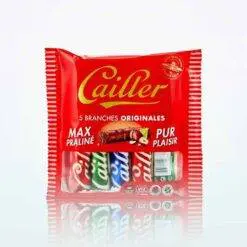Round Cooling Tower vs FRP Cooling Tower: Which One Suits Your Industrial Needs?
In industrial environments, effective heat control is critical to ensure operational safety and efficiency. Cooling towers help maintain optimal temperatures in systems such as manufacturing units, chemical plants, and power stations. Two widely used types are the Round Cooling Tower and the FRP Cooling Tower. While both aim to cool water by dissipating heat into the atmosphere, they differ in design structure, materials used, durability, and application suitability. Understanding these differences is important when selecting the right system for your industry.
What is a Round Cooling Tower?
A Round Cooling Tower is a type of cooling system designed in a circular shape. This tower uses water to absorb heat and release it into the atmosphere through evaporation. The round design allows for equal air distribution, which makes it more efficient in many situations.
These towers are compact, reliable, and easy to install, making them ideal for small to medium-sized plants. Their unique shape also reduces the effect of strong winds and environmental factors. This type of tower usually needs less maintenance and offers longer service life when handled properly.
What is an FRP Cooling Tower?
An FRP Cooling Tower is built using Fibre Reinforced Plastic (FRP), a strong and lightweight material known for its corrosion resistance. FRP is non-metallic, which means it doesn’t rust like traditional metal towers. These cooling towers are designed to withstand harsh weather, chemicals, and UV rays.
The main benefit of the FRP Cooling Tower is its long-term durability and reduced maintenance cost. It’s suitable for industries dealing with chemicals, oil, pharmaceuticals, or food processing—anywhere that corrosion is a concern. Because FRP is light in weight, these towers are also easier to transport and install.
Comparison: Round Cooling Tower vs FRP Cooling Tower
1. Design and Shape
The Round Cooling Tower has a circular design that supports better air circulation and wind resistance. It’s also known for its balanced water distribution.
On the other hand, FRP Cooling Tower designs may vary (square or rectangular), but the material used—FRP—offers great flexibility in shaping and sizing as per the industry need.
2. Durability and Material
Round Cooling Towers are often made of reinforced plastic or concrete but may not always have high resistance to corrosive environments.
FRP Cooling Towers, being made entirely of corrosion-resistant material, perform better in challenging conditions and have a longer lifespan with less structural damage over time.
3. Cooling Performance
Both cooling towers are efficient, but the Round Cooling Tower tends to offer uniform cooling due to its air-flow design.
FRP Cooling Towers, depending on size and fan design, can also deliver excellent performance, especially where chemical exposure is high.
4. Maintenance Needs
A Round Cooling Tower is easy to clean and maintain due to its simple structure. However, it may still require regular checks in dusty or polluted environments.
FRP Cooling Towers require minimal maintenance because of their resistance to rust, scaling, and algae. This makes them ideal for long-term use with fewer service intervals.
5. Installation and Space
Round Cooling Towers are usually more compact, making them suitable for limited-space installations. They are often used on rooftops or confined industrial areas.
FRP Cooling Towers offer flexibility in size and can be customized. They are lightweight, which makes transportation and installation easier.
Which One is More Energy-Efficient?
Both types can be energy-efficient if used correctly, but their efficiency depends on how well they are matched to the system’s needs. A Round Cooling Tower with good fan and motor efficiency can perform excellently in smaller-scale industries.
FRP Cooling Towers, because of their material properties and advanced design options, often have better thermal efficiency in tough industrial environments. Since they resist corrosion and scaling, they maintain performance for a longer time without energy loss due to deposits or damage.
Applications in Different Industries
- Round Cooling Tower: Ideal for HVAC systems, small factories, food industries, and textile mills.
- FRP Cooling Tower: Suitable for chemical plants, oil refineries, pharmaceutical industries, and large-scale manufacturing units.
Your industry type, climate conditions, and budget will help determine which cooling tower fits better.
Factors to Consider Before Choosing
Before investing in a cooling tower, consider these points:
- Type of industry and operating conditions
- Expected cooling load
- Available space and installation surface
- Maintenance availability
- Budget and long-term cost savings
- Resistance to chemicals or corrosion
Conclusion
Both the Round Cooling Tower and the FRP Cooling Tower offer valuable benefits depending on the application. If you need a compact, efficient, and low-cost solution, a Round Cooling Tower might be the right choice. However, if durability, chemical resistance, and low maintenance are your top priorities, then the FRP Cooling Tower will be a better fit.Choosing the right cooling solution ensures better performance, safety, and savings in the long run. For expert advice and reliable cooling solutions, Kooldrop offers industry-grade towers tailored to your business needs.













